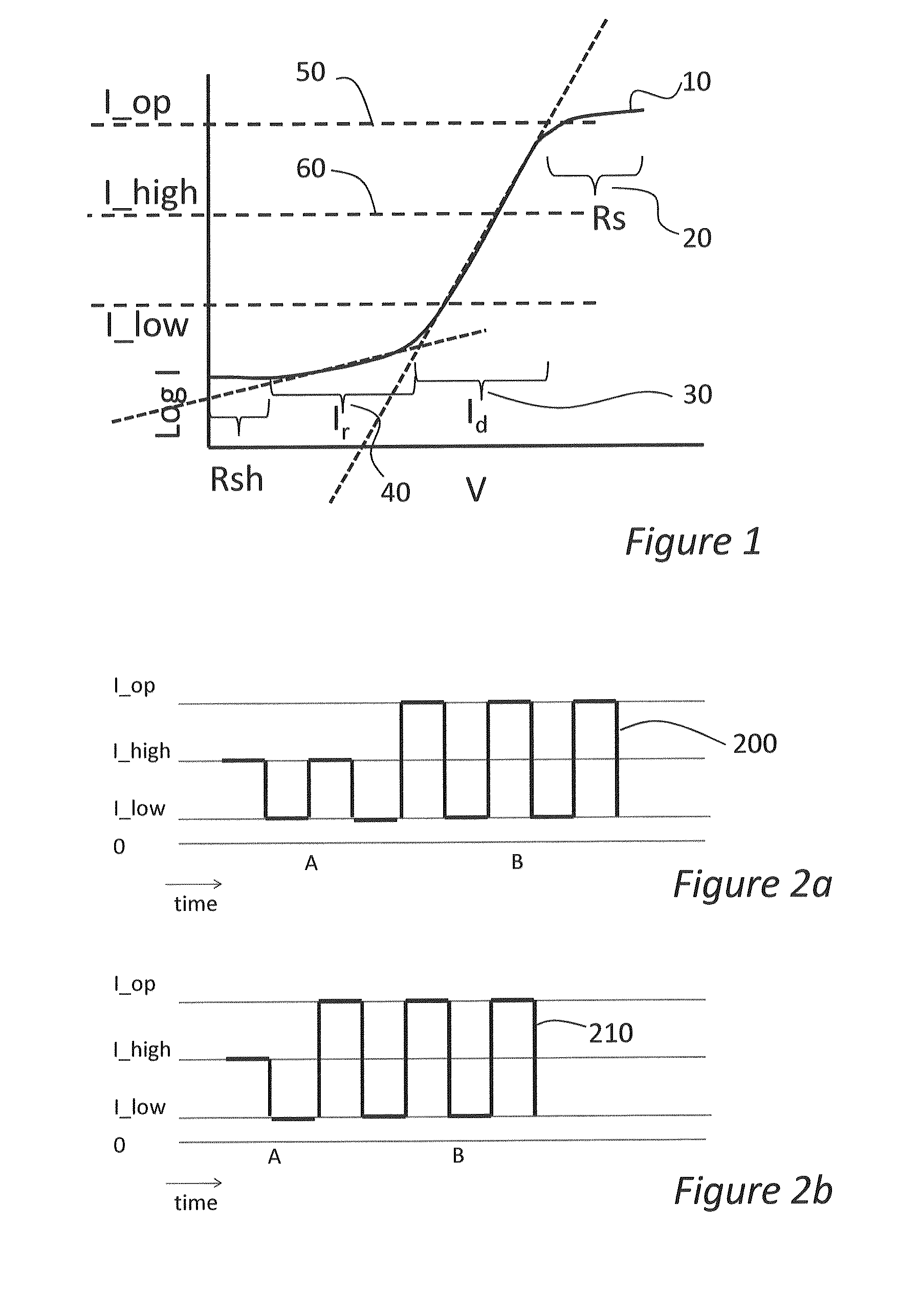Method of detecting a LED failure, a controller therefor, a lighting unit and lighting system
a technology of led failure and controller, applied in the direction of fault location, individual semiconductor device testing, instruments, etc., can solve the problems of incandescent light bulbs, the lifetime of led failures may be significantly longer, and the spread of lifetimes is not negligibl
- Summary
- Abstract
- Description
- Claims
- Application Information
AI Technical Summary
Benefits of technology
Problems solved by technology
Method used
Image
Examples
Embodiment Construction
[0034]FIG. 1 shows a schematic of an I-V characteristic of a LED according to the classical two-diode model. According to this model, the DC I-V characteristic, that is to say the variation of forward voltage V with drive current I, of a LED, can be described through a combination of four components: series resistance Rs, shunt resistance Rsh, diffusion current Id, and recombination currents Ir, through:
I(V)=Id(V)+Ir(V)−V / Rsh′
or in more detail:
I=Id·eq / n1kT·(V-IRs)+Ir·eq / n2kT·(V-IRs)−(V−IRs) / Rsh.
As shown schematically in FIG. 1, the plot 10 of current, on the Y axis or ordinate, against voltage on the X axis or abscissa, has several separate regimes, in which respectively, the series resistance Rs, the diffusion current Id, the recombination current Ir component, or the shunt resistance Rsh, dominates. The dotted line in FIG. 1 with the steeper slope represents the exponential function for the diffusion current; the dotted line with the shallower slope represents the exponential func...
PUM
 Login to View More
Login to View More Abstract
Description
Claims
Application Information
 Login to View More
Login to View More - R&D
- Intellectual Property
- Life Sciences
- Materials
- Tech Scout
- Unparalleled Data Quality
- Higher Quality Content
- 60% Fewer Hallucinations
Browse by: Latest US Patents, China's latest patents, Technical Efficacy Thesaurus, Application Domain, Technology Topic, Popular Technical Reports.
© 2025 PatSnap. All rights reserved.Legal|Privacy policy|Modern Slavery Act Transparency Statement|Sitemap|About US| Contact US: help@patsnap.com



